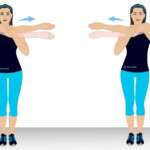How to brush your teeth step by step, Brushing your teeth may seem like a simple, everyday task, but many people aren’t aware that there’s an ideal technique that can make all the difference between just cleaning your teeth and ensuring optimal oral health. Proper brushing is the foundation of a healthy mouth, preventing cavities, gum disease, and even bad breath. Whether you’re a seasoned brusher or someone who’s looking to refine your technique, understanding the right steps to take will help you maintain a fresh, clean, and confident smile.
In this article, we’ll provide a How to brush your teeth step by step effectively, along with important tips to make your routine even better. From choosing the right toothbrush to knowing when to replace it, every detail plays a part in the health of your teeth and gums.
How to brush your teeth step by step
1. Choosing the Right Toothbrush
1.1. The Type of Toothbrush Matters
Before you dive into brushing, it’s essential to have the right tools. Choosing the right toothbrush is the first step in the process.
- Manual vs. Electric Toothbrush: While both are effective if used correctly, an electric toothbrush has been shown to be more efficient in removing plaque and reducing gum disease. If you prefer a manual toothbrush, make sure it has soft bristles to prevent damage to your gums and enamel.
- Size and Shape of the Brush Head: The head of your toothbrush should be small enough to reach all areas of your mouth, including the back teeth. A smaller head is often better for maneuvering around your molars and reaching tricky spots.
- Bristles: Always opt for soft bristles unless your dentist advises otherwise. Medium or hard bristles can be too abrasive on the gums and enamel, leading to tooth sensitivity and gum recession.
1.2. Choose a Toothpaste That Works for You
Your toothpaste should complement your toothbrush choice. Ideally, it should contain fluoride, which helps strengthen the enamel and fight cavities. There are also options for whitening toothpaste, sensitive teeth, or formulas targeting gum health or bad breath.
1.3. Replace Your Toothbrush Regularly
Whether it’s a manual or electric toothbrush, replace your toothbrush (or brush head) every 3-4 months or sooner if the bristles are frayed.
2. The Right Way to Brush Your Teeth: Step-by-Step
2.1. Wet Your Toothbrush and Apply Toothpaste
Before brushing, wet your toothbrush with water to soften the bristles slightly and help the toothpaste spread more easily. Then, apply a pea-sized amount of toothpaste to the bristles—this is enough to clean your teeth effectively without wasting excess paste.
2.2. Start at the Outer Surfaces of Your Teeth
This angle ensures that the bristles reach both the gum line and the tooth surface, where plaque tends to accumulate.
- Do Not Scrub: Avoid brushing too aggressively, as this can lead to gum irritation and enamel wear. A light, circular motion is more effective at removing plaque.
- Focus on one section of your mouth at a time, moving from your back teeth towards the front. Brush the outer surfaces of both the upper and lower teeth for about 30 seconds on each side.
2.3. Move to the Inner Surfaces of Your Teeth
After brushing the outer surfaces, move on to the inner surfaces of your teeth. This step is often overlooked, but the inner parts of your teeth are just as susceptible to plaque buildup.
For the inner surfaces, especially on the bottom row of teeth, you might find it easier to use vertical strokes (up and down). Continue using the same gentle circular motion for the upper inner teeth. This will help reach areas that the outer strokes might miss.
2.4. Brush Your Chewing Surfaces
Next, focus on the chewing surfaces of your teeth, particularly the molars at the back of your mouth. These surfaces have deep grooves and are more prone to cavities.
For the chewing surfaces, use back-and-forth motions rather than circles to effectively clean the flat areas where food particles can get stuck. Spend around 20-30 seconds per quadrant (upper right, upper left, lower right, lower left).
2.5. Don’t Forget Your Tongue
Your tongue is home to bacteria and can contribute to bad breath if not cleaned properly. Use your toothbrush (or a tongue scraper) to gently brush your tongue. Start from the back of the tongue and move forward, brushing as much of the surface as you can. This can help remove bacteria and keep your breath fresh.
2.6. Brush for Two Minutes
The most important aspect of brushing is the duration. Brushing for just a few seconds won’t effectively clean your teeth. Aim to brush for a full two minutes, making sure you spend about 30 seconds in each quadrant of your mouth.
To help you keep track, you can use an electric toothbrush with a built-in timer or use a 2-minute timer on your phone or watch.
2.7. Rinse and Clean Your Toothbrush
Rinsing right after brushing can wash away the concentrated fluoride from your toothpaste, reducing its effectiveness. If you feel the need to rinse, try using a mouthwash that also helps to kill bacteria and fight bad breath.
Lastly, rinse your toothbrush thoroughly with water and store it in an upright position so it can air dry. Avoid keeping it in a closed container, as this can cause bacteria buildup on the bristles.
3. Tips for Effective Brushing
3.1. Brush Twice a Day
Brushing at night is especially crucial as it removes food particles, plaque, and bacteria that have built up throughout the day.
3.2. Don’t Over-Brush
Use gentle pressure and avoid scrubbing your teeth forcefully. If you’re unsure whether you’re brushing too hard, opt for a toothbrush with softer bristles.
3.3. Use the Right Technique
While the movement is important, it’s the angle of the brush that’s key. Hold the brush at a 45-degree angle to the gum line, making sure to clean both the teeth and gums.
3.4. Don’t Forget Your Gums
Healthy gums are crucial for overall oral health. Gently massage your gums with your toothbrush to stimulate blood flow and keep them healthy. If you notice your gums bleeding, it could be a sign of gum disease or poor brushing technique, and you should see your dentist for advice.
3.5. Be Patient
Effective brushing takes time. Rushing through your routine can cause you to miss areas of your mouth, leaving plaque behind. Set a timer for two minutes and take your time to ensure every area is cleaned thoroughly.
3.6. Replace Your Toothbrush Regularly
As mentioned earlier, replace your toothbrush every 3-4 months or sooner if the bristles are frayed. A worn-out brush is ineffective at cleaning your teeth and gums.
4. Other Aspects of Oral Hygiene
4.1. Floss Daily
Brushing alone isn’t enough to remove all plaque and food particles, especially between your teeth. Dental floss is essential to clean the tight spaces between teeth that your toothbrush can’t reach. Floss at least once a day, preferably before bed, to remove debris and prevent cavities and gum disease.
4.2. Use Mouthwash
Choose a mouthwash that targets your specific oral health needs, whether that’s cavity prevention, gum care, or general freshening.
4.3. Regular Dental Check-Ups
Even with diligent brushing, regular dental check-ups are essential to maintain healthy teeth and gums. Your dentist can detect early signs of tooth decay, gum disease, and other oral health issues that may not be visible to the naked eye.
5. Conclusion: How to brush your teeth step by step, A Healthy Smile Starts with Proper Brushing
How to brush your teeth step by step, Brushing your teeth is the cornerstone of good oral hygiene, but it’s essential to do it correctly. By following the right technique and making brushing a consistent part of your daily routine, you can maintain a healthy, beautiful smile for years to come. Remember that gentleness, thoroughness, and consistency are key when it comes to brushing.
Incorporating flossing, mouthwash, and regular dental check-ups will further enhance your oral health. Ultimately, a well-maintained brushing routine can not only preserve your teeth and gums but can also contribute to your overall health and well-being. So, brush well, brush often, and let your smile shine!



No Comment! Be the first one.